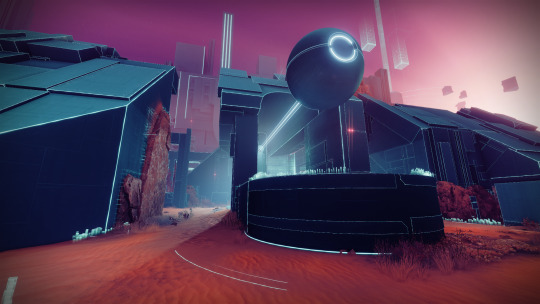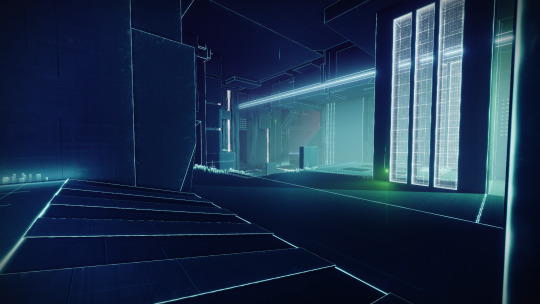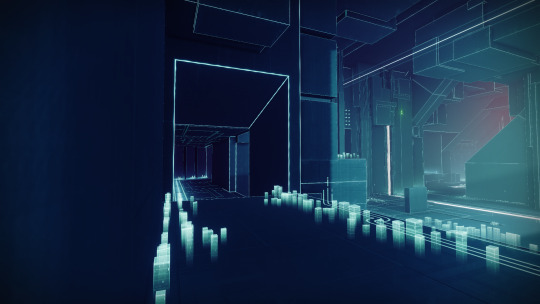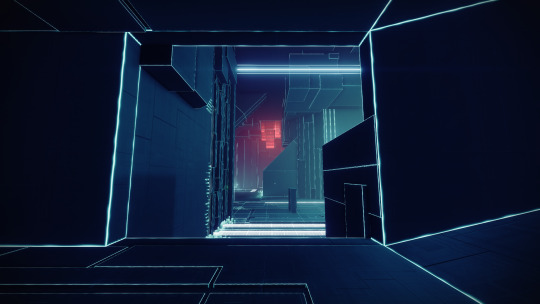#crucible multiplex
Explore tagged Tumblr posts
Text




Destiny 2: Squaring Up
#destiny 2#multiplex#crucible multiplex#crucible map#the crucible#destiny 2 crucible#crucible series#pvp map#pvp#hehehehe funny joke#is square and is up#don't @ me geometry people its a sideways square OKAY#bungie#destiny 2 pc
37 notes
·
View notes
Text
Destiny 2 Update 7.2.5 Destiny 2 update 7.2.5 has arrived, and here are all the changes and improvements mentioned in the p...
0 notes
Text
Bumblebee

Well everything’s a mess, so another Transformers movie might as well happen. It’s not like things could get any WORSE, right? I think that’s what most people (god I hope it’s most people) thought when the trailers for Bumblebee first came out, and who could blame them? The last Transformers movie, The First Knight was my actual worst film seen in 2017 (and I saw 113 in theaters, so like. 113th out of 113. That bad). There’s nowhere to go from there but up. You stick to a basic formula, a fan-favorite fish-out-of-water (Mr. Bee), and a lost, street smart teenager who desperately needs a friend (Charlie, played by Hailee Steinfeld). You stick them in that guaranteed crucible of nostalgia, the late 80s, and throw in some shady government commandos searching for our favorite lil Autobot and what do you get? Well...
You get...something not entirely awful, and actually kind of good? I mean, it’s not Citizen Kane or anything but. You know what I always say about low expectations, and in this case, truly, mind-blowingly, lowest-point-of-the-Mariana-Trench-low expectations really paid off!
Some thoughts:
I think it was a smart choice to bring the whole Transformers idea back to a time when it made sense, the 80s. You’ve got the Cold War thing going on, everyone’s on edge,
I appreciate that someone is saying what the whole audience is thinking - the best line of the movie is when John Cena yells, “They’re literally called Decepticons!”
As Sleepy Gay pointed out, Optimus Prime basically shows up at the end 10 minutes late with Starbucks like “Oh cool the planet’s not destroyed, super good job Bee, way to go.”
I don’t know whether to be happy that this female protagonist has a soft butch style and interests and hobbies that are not traditionally considered feminine while also being allowed to express her emotions or to be furious that she is so CLEARLY GAY without any mention or expression of it. Like, yay, not playing into stereotypes! But also no straight girl owns that many muscle tanks. It’s 20biteen - let Hailee Steinfeld be our soft butch queen goddammit.
All the best tropes from the 80s (or 80s-esque) misfit-finds-an-unlikely-friend oeuvre are here in full force, but the charm of Steinfeld’s performance and the honest to God sweetness of a plucky yet abashed robot can not be overstated.
I feel like I should add a recurring feature called Did I Cry? with maybe its follow-up cousin Am I Embarrassed That I Cried? And the answers to that are Yes and No, respectively, so those are some genuinely earned tears, people. Dad and daughter stuff just gets me, ok?
Was I entertained? Yes I was! Does this illuminate anything interesting about the Transformers as a whole, or speak to anything we didn’t already know about Bumblebee as a character? Eh. Not really. But if you’re running out of ideas for your multibillion dollar action franchise, there are far worse ways to deliver another installment to your audience than to frame it in one of the most tried and true recipes for delivering a sweet and solid trip to the multiplex.
#119in2019#bumblebee#bumblebee review#transformers#Hailee Steinfeld#john cena#optimus prime#movie reviews#film reviews
36 notes
·
View notes
Text
Jekyll & Hyde - Chapter 9
The final two chapters contain first-person narratives in the form of letters: the first by Dr. Lanyon revealing the core of the mystery; the second (telling the chronological story) by Dr. Jekyll himself.
Dr. Lanyon’s Narrative
He put the glass to his lips, and drank at one gulp. . . . there before my eyes . . . there stood Henry Jekyll!
On the 9th of January Lanyon received a strange message, begging him to carry out a series of specific (and very peculiar) requests…
Hyde seemed nervous and excited. He avoided polite conversation, interested only in the contents of the drawer. Hyde’s desperation for the drugs is obvious - presenting mannerisms and actions that could be associated with drugs and addictions:
“I could hear hi teeth grate with the convulsive action of his jaws;and his face was so ghasty to see that I grew alarmed both for his life and reason.
“Compose yourself” said I”
He gives Lanyon the option of letting him take the drug in privacy… or watching the results. Lanyon chooses the latter…
Hyde told Lanyon that his scepticism of “transcendental medicine” would now be disproved. And, at last, we get the transformation scene… in reverse. Hyde -> Jekyll.
‘[T]he transformation of Dr Jekyll reads dangerously like an experiment out of the Lancet’ (Oscar Wilde, 1889, as quoted in Stiles, 2006).
As Anne Stiles (2006) observes, the book’s structure reflects medical case studies of the period – but it cleverly subverts them.
The fact that Jekyll is both physician and patient calls into question the legitimacy and objectivity of scientific case studies…
Stevenson was a contributor to the Cornhill magazine, which (in 1875) published the case study of a brain-damaged French soldier, Sergeant F. Sergeant F. ‘developed two distinct personalities after his left cerebral hemisphere was damaged by a gunshot wound’ (Stiles, 2006, p. 880).
It’s interesting to consider how Hyde is described in the book - seemingly in touch with his feminine side due to some interesting descriptions:
Sergeant F was male, and his condition caused by a wound on the battlefield. But the dual, or multiple (sometimes called ‘multiplex’), personality was almost overwhelmingly a female condition.
‘Felida X’ was one famous female patient discussed in the Cornhill magazine.
Felida was a young hysteric who ‘exhibited a peculiar secondary state of mind’. Initially, she felt better in this second state, or ‘condition seconde’. But it had ‘unfortunate moral consequences’, when Felida became pregnant (out of wedlock), while in her altered persona (Stiles, 2006, pp. 891–2).



Arthur Miller’s book ‘The Crucible’ is based on the Salem witch trials that took place during 1692/93. A big theme within this is hysteria - all those affected being young girls in the village. Hysteria was a major factor in the many accusations of witchcraft that occurred throughout The Crucible. It helps to understand what hysteria is--an overwhelming fear and excitement that overrides all logic and is often enhanced and intensified by the presence of others who are acting out on that fear.
Stiles (2006) theorises that small, puny, right-brained Hyde has something of the Victorian feminine about him: emotionally unstable, physically chaotic, somehow ‘lesser’ than his male counterparts.

The narrative is helped by profession ‘honour’: in this case, as a doctor, Lanyon is bound by the Hippocratic oath and cannot say what he’s seen Hyde’s tone is mocking: he feels superior to Lanyon, even in this vulnerable state Lanyon’s soul ‘sickens’… and, soon after he dies from the disbelief and stress from the shock.
Through the astonished eyes of Lanyon, Stevenson offers a vivid description, using detailed language and imagery to lend immediacy to supernatural events.
Jekyll has clearly entered into the investigations of the nature of man, whereas Lanyon has adhered strictly to rational, materialist science.
Lanyon cannot conceive of the world that Jekyll has entered; thus, when he is forced to confront this world as manifested in Hyde’s transformation, he retreats deep within himself, spurning this phenomenon that shatters his worldview.
The impact of the shock is such that it causes Lanyon, a scientist committed to pursuing knowledge, to declare in Chapter 6, “I sometimes think if we knew all, we should be more glad to get away.” Lanyon has decided that some knowledge is not worth the cost of obtaining or possessing it.
Like Utterson and Enfield, he prefers silence to the exposure of dark truths. The task of exposing these truths must fall to Henry Jekyll himself, in the final chapter of the novel. As the only character to have embraced the darker side of the world, Jekyll remains the only one willing to speak of it. These men all wish to remain trapped in the walls and social norms and expectations of society refusing to believe in other ways or explanations that they do not understand. This can be seen as a reflection of Victorian society and the gentlemen of the time, who would rather remain in blissful ignorance and not kick up a fuss then explore and wish to expose the truth that may cause a disturbance of some kind - their status and names are more important to them.
3 notes
·
View notes
Text
Crisis Inspiring Innovation
Biotechnology and pharmaceutical companies are constantly developing with job mapping (users as innovators) in mind. While I can’t say all diagnostic tools and drugs are developed toward improving quality of life, I find some of the most important and recent innovations were inspired by the pandemic. The pandemic revealed deep underlying problems in the healthcare system, changed the way we perceive the world and forced scientists to respond by innovating in new directions. By pushing the frontiers of science forward, scientists have reinvented traditional vaccines, manufactured proprietary Valor Glass (vials for vaccines) at Corning, and developed diagnostics in surveillance platforms. In terms of regulations, the FDA responded by adapting its policies, exercising emergency use authorization (EUA) authority, creating Coronavirus Treatment Acceleration Program (CTAP), and launching the Pandemic Recovery and Preparedness Plan (PREPP) initiative to strengthen the nation’s public health protections against chemical, biological, radiological and nuclear (CBRN) threats.
Traditional vaccines inject bits of attenuated or inactivated viruses and take an average of 10 years to progress from lab research to being administered in the hospital. Scientists have to understand the pathogen causing the infectious disease and identify its associated antigen, which activates our immune system to fight the virus. Then, the antigen must be mass produced before becoming integrated into a vaccine. In general, it’s a very lengthy process.
However, antigens are usually proteins, and human cells are constantly making proteins as building blocks to maintain our bodies. Scientists asked a question: What if we can program our own cells to make these antigens and trigger the same immune response as traditional vaccine, and tried to improve the process? This is the goal of mRNA vaccines. mRNA is the code instructing our cells what proteins to make, and thanks to advances in DNA sequencing, we can quickly identify the code, make the antigenic proteins specific to the disease, and build the mRNA in the lab. In other words, mRNA vaccines deliver a code not in the form of antigenic proteins, but as instructions commanding our bodies to produce antigens. Once the antigen is present in our bodies, it initiates an immune response just like a traditional vaccine.
This technology could represent a paradigm shift in vaccination. mRNA is much simpler to produce than proteins. To synthesize mRNA, scientists insert a sequence corresponding to the mRNA into a plasmid, a small DNA molecule within a cell that can replicate itself. Then, this plasmid is put into a reactor where an enzymatic reaction triggers the synthesis of the mRNA. Finally, mRNAs are purified and encapsulated in a lipid nanoparticle, a shell of precisely formulated fat, which helps carry the mRNA into our cells. Inside the cells, mRNA is translated into the antigenic protein eventually triggering an immune response. Starting with raw materials, mRNA vaccine manufacturing takes about 2-6 weeks to produce a completed vaccine in a vial or syringe.
With vaccines ready for distribution, billions of vials will have to be manufactured, filled, and shipped, at top speed and in some cases under extreme stress (Pfizer’s vaccine must be kept below -90 degree C). Glass used to store vaccine must prove highly stable and chemically inert. Standard medical vials - made of borosilicate - often break as they’re filled, and just one damaged vial can ruin a batch of doses and stop a production line. In response to it, Corning has modified its manufacturing site and reinvented its vails to create an alternative to borosilicate, called Valor Glass. Using platinum-lined ceramic crucibles, heated to more than a thousand degrees F, they combine silica with new ingredients by adding alumina and removing boron to make the glass more resistant to degradation, and therefore less likely to leach contaminant into the contents. Other innovations include the process where converters cut and shape tubes of Valor Glass into vials, which are then submerged in a molten-salt bath. Potassium atoms in the hot mixture swap with smaller sodium atoms embedded in the surface of the glass, creating tension and therefore toughness - this process was first developed for Gorilla Glass, which is used in iPhones and other electronic devices. A vial fortified this way can withstand as much as a thousand pounds of force. Finally, the vials are transferred onto plastic tracks by robotic arms and conveyed through a chamber where they are rinsed, air-dried and coated with a polymer to reduce surface friction on a filling line, generating glass dust that can ruin doses. That said, there are also other companies racing to produce vaccine vials, because there are not enough vials now.
For the purpose of diagnosing, monitoring, screening and prognosis, in vitro diagnostic tests are essential. In an attempt to support global COVID-19 efforts, biotechnology companies like Illumina Inc. (as the gene sequencing leader) have responded by developing and launching its first rapid and scalable COVID-19 detection test under section 564 of the Federal Food, Drug, and Cosmetic Act (FD&C Act), where “the FDA commissioner may allow unapproved medical products or unapproved uses of approved medical products to be used in an emergency to diagnose …” The COVIDSeq test is an amplicon-based NGS test featuring primers designed to detect RNA from the SARS-CoV-2 virus in nasopharyngeal, oropharyngeal, and mid-turbinate nasal swabs from patients with signs and symptoms of infection who are suspected of COVID-19. As a quality control, an internal control consisting of 11 human mRNA targets is also included in every sample. In doing so, Illumina’s recent innovation has leveraged and modified existing validated and publicly available ARTIC multiplex PCR protocols to amplify SARS-CoV-2 virus-specific sequences using their proven sequencing technology.
References:
https://www.nature.com/articles/s41541-020-0159-8 (Links to an external site.)
https://www.nature.com/articles/nrd.2017.243 (Links to an external site.)
https://www.newyorker.com/magazine/2020/12/14/countdown-to-a-coronavirus-vaccine (Links to an external site.)
https://www.corning.com/worldwide/en/innovation/materials-science/glass/accelerated-covid-vaccine-preparation.html (Links to an external site.)
https://www.wsj.com/articles/covid-19-vaccines-could-depend-on-the-strength-of-this-vial-11605306378 (Links to an external site.)
https://www.newyorker.com/magazine/2020/12/07/the-race-to-make-vials-for-coronavirus-vaccines
https://www.fda.gov/emergency-preparedness-and-response/mcm-legal-regulatory-and-policy-framework/emergency-use-authorization (Links to an external site.)
https://sapac.illumina.com/company/news-center/press-releases/2020/8cd141fb-68d0-4144-8922-45693ac3f453.html
Edited by J.Briggs
0 notes
Photo

Laserhawk: Amalgamation of: Lyja the Laserfist + Firehawk Real Name: Lyjarane Biography: In an attempt to dismantle Earth’s superhero defenses, the Skrultian Empire (Skrulls + Martians) used the collected DNA samples of the Justice Four to create an army of Ultra-Skrultians (Super-Skrull + Ultra the Multi-Alien). One of their agents, Lyjarane, was given the powers of Torchstorm and sent to attack the Justice Four. When her initial assault failed, Lyjarane pretended to be a human named Lorraine Green, who was mutated into a fire-blasting superhuman by Crucimak (Crucible + Tokamak) and Multiform (Lifeform + Multiplex), agents of A.H.E.M. (AIM + HIVE). The Justice Four defeated the pair (who retained innocence about human experimentations), and Ronnie and Lorainne fell in love. Lyjarane eventually revealed to Ronnie that she was the Skrultian that attacked the Four months ago, and she also told them of an upcoming Skrultian invasion. The Justice Four, with Lyjarane’s help, turned back the invaders, but she was slain by the invasion’s commander, Paibok Ro (Paibok + Kanjar Ro). Lyjarane was later resurrected by Deathseid (Thanos + Darkseid), ruler of the New Eternals of Apoktan (Eternals/Titan + New Gods/Apokilips), as part of an invasion force. Powers: Skrultian powers of shapeshifting. Radiation blasts and transmutation blasts. Force-field generation. Self density manipulation. Resistance to the skrultian weakness of fire. Generation of wings made from fire. Trained in Skrultian military tactics and combat. Knowledge of Earth cultures and languages.
0 notes
Text
Nine-screen cinema could fit in Dundee Waterfront jigsaw
Dundee ^ | A nine-screen multiplex cinema and a hotel are the cornerstones of a £24 million plan for a gap site at Dundee Waterfront. Crucible Alba Group wants to transform the site at Greenmarket, directly to the south of Groucho's music store. The company said it expects to create 250 permanent jobs at the site ... http://dlvr.it/QMCbWC
0 notes
Text
The Virtual Arena: From Silver Screen to Silicon Dreams! (Part 1)
With the Digital Out-of-Home entertainment (DOE) applications of virtual reality (VR) gaining momentum, along with the announcement of more VR arcades scheduled to open, developments in the serious business opportunities for VR have started to galvanize. In this two-part feature, industry specialist Kevin Williams looks at the continuing impact that the movie business aligned with prominent intellectual properties (IP) have in steer new commercial entertainment VR business.
The movie theater business is an industry that has started to play a crucial role in shaping the penetration of commercial entertainment VR systems. Beyond the more pedestrian approach of taking existing VR consumer content and representing it for commercial (pay-to-play) utilisation. Or the rarefied atmosphere of multi-million dollar contracts to create super-charged theme park attractions. The multiplex lobby has become the new crucible for the VR innovation
The film industry, and especially the movie theatre owners have started to see a stagnation in ticket sales, and have been active in trying to invigorate the guest experience beyond traditional approaches. What has been called ‘Lobby Entertainment’ has seen serious investment with VR deployed as a promotional and entertainment delivery platform. While the cinema sector has invested in improving the movie going experience, trying to compete with the explosion in immersive technology such as VR and interactive attractions.
The hopes for greater pixel density on future iterations of consumer VR head-sets are placed into stark comparison with the development in the planetarium business with the latest 8K projection systems. Industry leaders such as E&S, presenting their latest ‘True8K’ offering, an 8,000-pixel resolution stated to represent some 50 million unique pixels across their planetarium system. The immersive element of full-dome and planetarium projected experiences, an aspect that conventional VR head-mounted displays have yet to emulate. But even with this, at the recent Immersive Media Entertainment, Research, Science & Arts (IMERSA), a crucial champion of digital experiences for education and entertainment in planetariums, schools, museums and attractions, VR has started to gain traction as a medium in this sector.
The growth in interest was revealed during the National Theater Owner Industry’s annual convention in Las Vegas. CinemaCon 2017 proving a star-studded event for the promotion of the seasons major blockbuster movie releases. But behind the glitter, the cinema owners are faced with the reality to increase the guests dwell time within the movie-going experience, and along with turning to increased investment in the movie watching environment with 4D motion seating and increased presentational medium as seen with the development of the new three-screen panoramic theatrical systems, such as the Barco Escape; but the industry also evaluates new VR based ‘Lobby Entertainment’.
One exhibitor at CinemaCon that was heavily promoting VR was CJ 4DPLEX, the company has been involved in many prominent installations of their 4DX motion effects cinema seating system. Incorporating motion, spritzers and physical effects, combined with VR experiences. Most notably seen dominating the Samsung Gear VR Theater booth at CES. That theater seating approach to VR is part of CJ’s investment into the technology – at CinemaCon the company demonstrated their 4DX VR initiate, that sees the mobile VR (Samsung Gear VR) platform paired with their effects seats solution.
youtube
Fighting for the attention of the audience using this new technology has previously seen VR deployed in lobbies as a free-to-experience promotional tool. Taking their effects seat system outside of the theatre, and veteran manufacture MediaMation have launched their ‘MX4D VR Lobby POD’ – the two-rider, mobileVR equipped platform seen to promote the Coco-Cola Company both at IAAPA, CinemaCon and also at the International Cinema Technology Association (ICTA) event – the POD’s targeted for the lobbies of prominent cinema locations, offering an eye-catching and all important experimental marketing tool.
youtube
Many cinemas have installed pop-up promotional attractions to showcase coming feature films using VR enclosures, and several developers and producers have also started to get in on the act of presenting “experiential branding”. One such entrant was AMD’s Radeon Technologies Group (RTG) who partnered with Indian based Arka Media Works, to promote the upcoming Baahubali The Conclusion, Indian motion picture. Using their new VR capture camera, (the bb360cc), to create the fully immersive promotional VR experience, called The Sword of Baahubali – shown to movie-goers in lobby based pop-up VR experiences. Something VRFocus reported on late last year.
youtube
It is this continuous fight to create the most compelling VR promotion experience to help sell the Summers blockbusters that was represented on and off the show floor – Universal Pictures and IMAX during CinemaCon’17, presented the spectacular The Mummy Zero Gravity Stunt VR Experience. Seeing the installation, a ten-seat, 10-minute VR experience using the Oculus Rift HMD platform and Positron’s ‘Voyager’ full-motion pod seating, incorporating haptic feedback. The free pop-up promotion being installed at selected flagship venues as a major marketing experience to launch a vital property.
IMAX Corporations investment in VR has moved beyond using it as mere Pop-up promotion or ‘Lobby Entertainment’, the company board has invested heavily to develop their own estimations of what is needed create a chain of VR Arcade properties based on their movie experience – seen as a possible companion to the cinema visit, hoping to cement their future movie business. The first IMAX VR “pilot VR center” concept was opened in Los Angeles at the end of 2016, and based on initial reactions (with a reported some 20,000 visitations since the sites opening) has ramped-up development. Their second VR center opening in New York at the end of May, part of the exiting AMC Kips Bay 15 cinema, with a schedule to open additional sites in Manchester, UK, Shanghai and Japan. The concept visualized as an additional revenue component to an established cinema site, a rethinking of the traditional “arcade room” once seen at theaters.
https://www.youtube.com/watch?v=sX6j88BPopg
With their movie industry clout, IMAX has been able to establish partnerships with leading movie studios towards creating exclusive content that will populate the high-end VR establishment. IMAX recently announcing an agreement with Warner Bros. Home Entertainment, a co-financing and production agreement to develop and release three premium, interactive VR experiences based in Warner’s upcoming movie properties. The first announced being ‘Justice League VR’ – debuting exclusively at IMAX VR centers, before consideration of a ported to consumer VR hardware. This movie cross-over investment also seen with the StarBreeze Studio developed promotional VR game experience The Mummy Prodigium Strike (running on the wide-field of view StarVR headset), installed in the IMAX VR site as an early access content.
Other major cinema chain operators have started their own moves in this direction – much of the investment seen coming from the vast Chinese cinema sector, the conglomerate Dalian Wanda having developed their Wanda VR concept placing the latest Chinese DOE VR hardware in their own ‘Lobby Entertainment’ presentation. A move that is expected to be replicated across their growing movie theatre empire, building on the 2016 announcement that Odeon and UCI Cinema Group had been acquired by AMC Entertainment group (part of the Dalian Wanda operation) for an estimated $1.2bn.
With the ability to offer the best platform for the promotion of influential movie properties, the industry has turned from the restrictions of a consumer VR release and looked at using the latest immersive entertainment technology to promote their properties. Warner Bros., 20th Century Fox, MGM, Westfield, Bold Capital Partners and film giant Steven Spielberg recently revealed as first round investors in the VR developer Dreamscape Immersive with ambitious VR plans to enter the DOE sector with unique virtual attractions. Other new entrants into the VR attraction / IP sector expected to reveal themselves in the coming months.
Come back at the same time next week for part two, continuing this exclusive coverage of the DOE sector.
from VRFocus http://ift.tt/2r8VvJU
0 notes
Text




Destiny 2: Altering
#destiny 2#multiplex#crucible multiplex#the crucible#crucible map#destiny 2 crucible#crucible series#pvp#pvp map#bungie#destiny 2 pc
24 notes
·
View notes
Text


Destiny 2: Skyline
#destiny 2#multiplex#crucible multiplex#the crucible#crucible map#destiny 2 crucible#crucible series#pvp#pvp map#bungie#destiny 2 pc
19 notes
·
View notes
Text



Destiny 2: New Scene
#destiny 2#multiplex#crucible multiplex#crucible map#destiny 2 crucible#the crucible#pvp map#pvp#crucible series#i want to play gambit on this map#bungie#lemme play gambit here#destiny 2 pc
11 notes
·
View notes
Text



Destiny 2: Obelisk Overdrive
#destiny 2#multiplex#crucible multiplex#the crucible#destiny 2 crucible#crucible map#crucible series#pvp#pvp map#bungie#destiny 2 pc
9 notes
·
View notes
Text




Destiny 2: Blackreach
#destiny 2#multiplex#crucible multiplex#the crucible#destiny 2 crucible#crucible map#pvp#pvp map#the red light reminded me of the dwarven city in skyrim#love that place#bungie#destiny 2 pc
13 notes
·
View notes
Text




Destiny 2: The Green Line
#destiny 2#multiplex#crucible multiplex#the crucible#crucible map#destiny 2 crucible#crucible series#pvp#pvp map#i like the little bars on the ground#theyre like little cheering fans in bleachers \o/#bungie#destiny 2 pc
13 notes
·
View notes
Text




Destiny 2: Beaming
#destiny 2#multiplex#crucible multiplex#the crucible#crucible map#destiny 2 crucible#crucible series#pvp#pvp map#bungie#destiny 2 pc
9 notes
·
View notes
Text



Destiny 2: Last Look
#destiny 2#multiplex#crucible multiplex#the crucible#destiny 2 crucible#crucible map#crucible series#pvp#pvp map#bungie#destiny 2 pc
9 notes
·
View notes